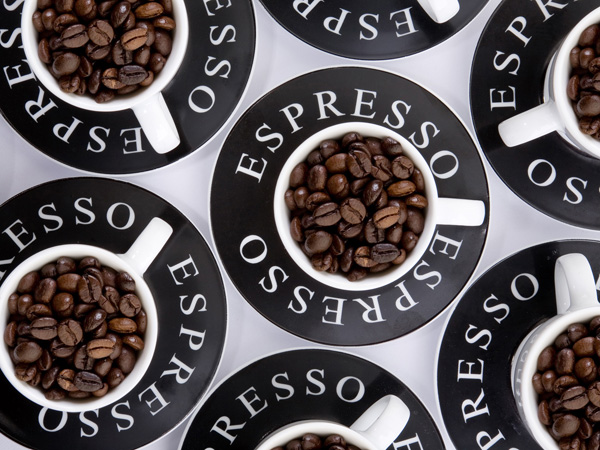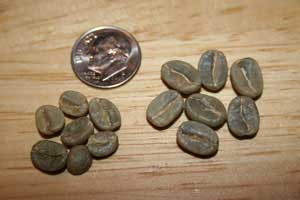Coffee blending is not that simple the difference between individual coffee and blended coffee Italian coffee

What is a match?
Since it is a blend, it naturally refers to more than two kinds of original beans, but it can also be put together with the same coffee beans of different roasting degrees, and even the new crop of the same coffee beans can be put together with aged coffee or old crop, so the type referred to in the blend is not a narrow coffee variety, but a broad extension to the flavor of coffee. When blending, 2 to 6 kinds of coffee beans are generally used, and too many kinds will not be able to express the unique flavor of coffee.
Blending coffee generally does not adopt a 1:1 blending ratio, because this may inhibit each other's unique flavor, so there must be primary and secondary points to blend a more wonderful taste than single coffee. If you want to mix coffee with complex flavors, you can reduce the proportion of theme beans, and vice versa.
Blending coffee depends on trial and error, so a mathematical combination should be used to draw up a blending schedule before blending, and then the best solution should be determined through the blend-cup test process.
Don't think that this is something that is out of date or not supported by technology. In fact, only the experience, inspiration and painstaking efforts of the blender can make a good cup of coffee.
Why mix?
Although there are some fixed varieties of coffee that can be drunk directly as single-serve coffee, most coffee has more or less defects in flavor. For example: no special flavor, lack of depth, lack of intensity, or a certain flavor is too strong. To compensate for these deficiencies, several coffee beans with different characteristics are blended to create a harmonious and deep taste.
Besides flavor considerations, there are also many commercial considerations, such as creating a brand.
In 1870 Joel, a Kentucky grocer and founder of Maxwell, felt that coffee at the time did not meet his needs and began to try to blend different coffee beans. When he had concocted a flavor that pleased him, he took it to the prestigious Maxwell Hotel in Tennessee's capital. This is a hotel with a strong tradition of southern hospitality. Joel's coffee soon became the most popular product at the Maxwell House, and the roaster became the largest in the United States. Maxwell House thus gives Joel's coffee its elegant and unique name.
Highlighting the good flavors and hiding the bad can also be the purpose of blending. Want a more balanced cup of coffee, want a strong cup of acidity, great body and plum fruit aroma, and great fat? That must be a shortcut, for business operations in terms of such a high cost of single difficult to find.
Nice names will add a lot of points to the mix, so it is easier to create selling points such as: "intellectual""black cat" mix,"stump city""hair curlers" and so on are successful examples.
How do you fit it?
Blending coffee isn't just mixing coffee beans together. Sometimes the blending of two specialty coffees can suppress each other's unique flavors; blending is not simply a combination of several specialty coffees, blending is like a painter's palette of attractive colors. There is a misunderstanding, is to ask the secret recipe of this match, in fact, there is no secret recipe. The secret to coffee mixing isn't the recipe Coke keeps locked away in the bank safe. Blending is based on flavor to choose beans, Green buyer, Roaster, Blender together to create a popular blend, all indispensable.
First of all, green bean buyers want to buy green beans for the company at the right price and flavor, so they have been testing to find those flavors, such as:
acid
Mocha, Hawaii Kona, Kenya, Mexico, Guatemala, Costa Rica SHB, Gilly Mazaro, Colombia, Long El Vado, Western Hemisphere washing method of high quality new beans and so on.
bitter
Java, Mantinen, Bogota, Congo, Uganda, etc.
gan
Colombia, Venezuela (aged coffee), Blue Mountain, Gilly Mazaro, Mocha, Guatemala, Mexico, Kenya, Brazil Sandos, Haiti, etc.
alcohol
Colombia, Mocha, Blue Mountains, Guatemala, Costa Rica, etc.
neutral
Brazil, Peru, Costa Rica, Venezuela, Honduras, Cuba, etc.
The above acid, bitter, sweet, alcohol, neutral are for reference only, because there are too many factors affecting flavor performance (variety, altitude, light, moisture, fertilizer, shade trees, etc.).
The bakers try to find the best flavor of the beans by cupping.
Blenders use their experience to blend and test to find the flavor the customer wants.
Source:
Cow Coffee Blog
Important Notice :
前街咖啡 FrontStreet Coffee has moved to new addredd:
FrontStreet Coffee Address: 315,Donghua East Road,GuangZhou
Tel:020 38364473
- Prev

How sour is the coffee? Where does the sour taste of coffee come from? How to use caffeic acid
In the eyes of coffee enthusiasts, this kind of acid mixed with bitter taste that many people do not like is precisely the charm of high-quality coffee. Acidity is even one of the criteria for coffee connoisseurs to judge whether coffee is good or bad. Most of the time, the acidity of coffee can not be caught by ordinary taste buds, so a lot of coffee will not make people feel very sour, it is just behind the bitter and mellow taste, with your taste.
- Next

The concept of Fine Coffee Specialty Coffee (1) the third Wave of Coffee Culture and History in the World
The traditional classification of coffee beans is usually based on the classification criteria defined by the coffee producing countries, and then agreed to become common in the international market and traded under such a tacit understanding. For a long time, coffee producing countries have their own classification and evaluation criteria for coffee, which serve as the pricing guidelines in the coffee market. But slowly in recent years, coffee consuming countries have begun to demand unified evaluation criteria.
Related
- What is the meaning of lactic acid fermentation with coffee bean treatment?
- How to judge the state of foam by sound?
- How does the latte pull out the unicorn pattern? Come to get for a little trick to improve the flower pull!
- Will flower pulling affect the taste of the latte?
- Do you know the history of coffee?
- The difference between honey treatment and sun washing what is raisin honey treatment?
- What kind of milk can a novice use to make coffee foam to keep the foam longer? The correct method and skills of milking tutorial sharing
- Why do washed coffee beans taste sour? Flavor characteristics of washed Coffee
- Introduction to the skill of how to practice the size and height of water injection around the circle of hand-brewed coffee
- How do beginners practice coffee flower drawing from scratch?

